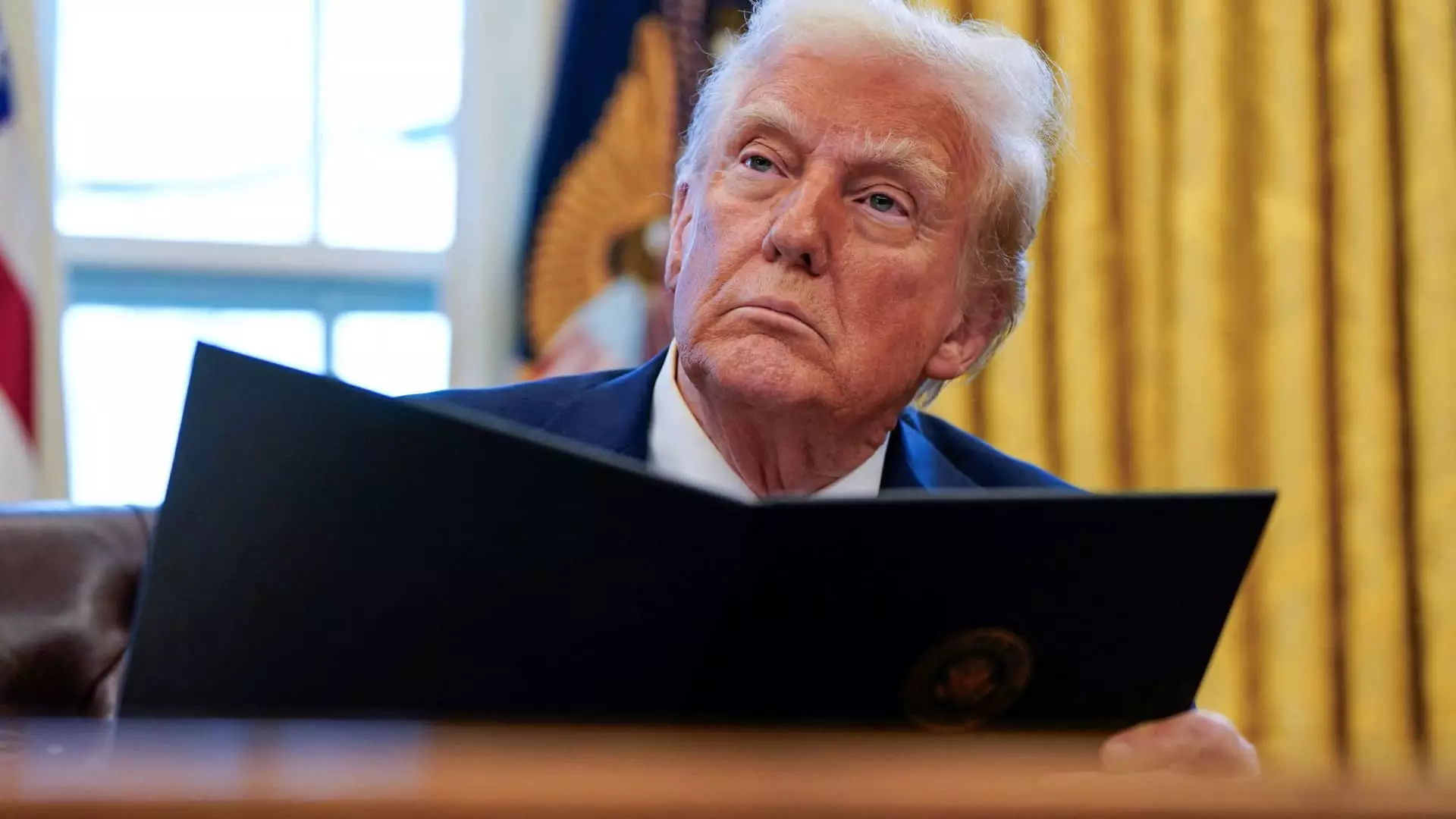After weeks of hushed anticipation, the White House officially declared that President Donald Trump would impose significant tariffs on key U.S. trading allies, including Canada, Mexico, and China. Officially announced by White House Press Secretary Karoline Leavitt, both Canadian and Mexican imports are set to receive a hefty 25% tariff, while Chinese goods will face a more moderate 10% duty. The rationale behind this decision stems from concerns over the ongoing crisis of illegal fentanyl trafficking from these nations into the United States. This announcement, however, led to notable reactions in the stock market, with major indices such as the Dow Jones Industrial Average plummeting by over 300 points, illustrating the stark market unease surrounding this decision.
This tariff announcement signals a strategic maneuver from President Trump, aiming to leverage economic pressure as a tool to reshape foreign policy, particularly concerning immigration and the drug trade. Indeed, Trump’s intentions reflect an aggressive posture towards countries that he perceives as endangering U.S. citizens through the proliferation of drugs. While these tariffs are characterized as “promises made and promises kept,” there looms uncertainty over how they will affect U.S. economic relationships with these significant trading partners. The $1.6 trillion in annual trade could experience a radical transformation due to these new financial barriers.
The prospect of new tariffs is not just a matter of political posturing; economic analysts express considerable apprehension about potential inflationary pressures that may arise as a consequence. Currently, many indicators suggest a decline in inflation rates; still, the imposition of tariffs could instigate an immediate rise in consumer prices. The Commerce Department recently reported an inflation reading that aligns with Federal Reserve expectations, yet experts warn that circumstances could swiftly change depending on how these tariffs are implemented.
Fed officials are carefully observing this situation, emphasizing that clarity surrounding the actual policies and intended outcomes of these tariffs will be crucial. This dashboard of economic factors places increased focus on Fed Governor Michelle Bowman’s remarks regarding the need for confidence in how the economy might respond in light of the proposed tariffs. Furthermore, Chicago Fed President Austan Goolsbee noted that the nature of these tariffs—whether they are temporary measures or if they invoke retaliatory actions—will be instrumental in determining their long-term impact.
This tariff escalation can be viewed within a larger narrative involving President Trump’s approach to domestic politics and his administration’s historical dealings with foreign adversaries. By tying the imposition of tariffs to a national crisis like the opioid epidemic, the administration seeks to galvanize public support while deflecting criticisms over its trade strategies. The claim made by trade advisor Peter Navarro—that the staggering annual death toll from fentanyl mirrors the capacity of large venues like the Superdome—serves as a stark reminder of the urgency attributed to the administration’s stance.
The narrative surrounding these tariffs directly intersects with broader concerns about America’s economic stability and its role in international trade. Detractors of the policy argue that such aggressive measures could backfire, potentially leading to economic isolationism that could reduce the U.S. labor market’s competitiveness while inciting retaliatory tariffs from other nations.
As the announcement unfolds, both the domestic population and international observers will be monitoring the repercussions of these new tariffs closely. President Trump’s strategic ambitions to influence foreign policy and deter drug trafficking through economic means present a complex puzzle for economists and political analysts alike. The evolution of these tariffs, their immediate effects on inflation, and potential retaliatory measures by affected nations will likely shape the narrative of both U.S. domestic policy and international relations as we move forward. Only time will reveal the full impact of these economic strategies, but for now, uncertainty reigns as market stakeholders grapple with the possibility of a tumultuous trade environment ahead.


Leave a Reply